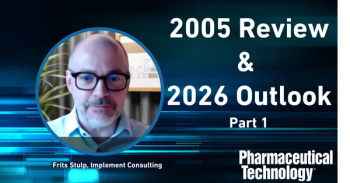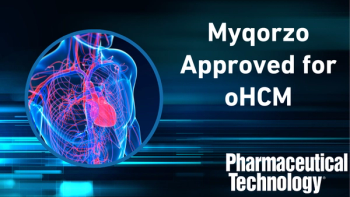
Equipment and Processing Report
- Equipment and Processing Report-08-20-2008
- Volume 0
- Issue 0
How to Be Green in a CGMP-Regulated Environment
The concept of the the triple bottom line incorporates a company's financial, social, and environmental performance. As a result, an increasing number of companies are investigating how sustainable, green technologies and practices can help them stay competitive in a challenging regulated market.
Like many industries today, the pharmaceutical industry is under enormous pressure to reduce its expenses and its prices. The industry acknowledges its responsibility to the environment, shareholder expectations, and society as a whole. This concept is called the triple bottom line, and it incorporates the company’s financial, social, and environmental performance. As a result, an increasing number of companies are investigating how sustainable, green technologies and practices can help them stay competitive in a challenging regulated market.
Unlike other sectors, the pharmaceutical industry must comply with stringent current good manufacturing practice regulations. Decisions about green, sustainable, and energy-saving opportunities cannot be based on financial considerations alone. It is imperative that all systems, processes, equipment, and facility designs be reliable and not compromise drug efficacy and safety. Being green in the pharmaceutical industry begins at the intersection of business, innovation, compliance, and the environment.
Establishing a sustainability team is a good way for a company to start being green. The sustainability team sets performance goals, benchmarks green practices, assesses employee awareness, and identifies the need for training. The team also monitors, analyzes, and reports on the progress the company is making in the program.
The process of developing a sustainability program and incorporating it into a pharmaceutical operation should first identify the direct effect the operations have on the environment and establish a base line of the company’s greenhouse gas emissions (often referred to as its carbon footprint). Businesses must realize that they affect the environment both directly (e.g., through the emissions from their buildings and processes) and indirectly (e.g., through the amount and type of power they consume). Finally, the program must evaluate the supply chain’s effect on the environment, including impact from sources such as product transportation, commodity production, waste disposal, outsourced materials, contractor-owned vehicles, and employee travel. A sustainable procurement strategy can foster efficiency, conserve utilities, and reduce waste in the supply chain.
The techniques for improving sustainability, and their corresponding risk to the product, vary with their function and relation to the product. For example, a typical office building poses no product risk, but a sterile finishing facility has an immediate effect on the product. Accordingly, a company must assess the risk of all activities, including proposed green activities, within the sterile facility that could affect the product.
The processes of designing, constructing, and renovating facilities offer many opportunities to improve sustainability. One way to track and assess the sustainability projects is by using the US Green Building Council’s (USGBC’s) Leadership in Energy and Environmental Design (LEED) certification program. The LEED program is a consensus document that uses a point system in various categories to score a building on its environmental impact. Although the LEED program is not specifically focused on pharmaceutical facilities, using the LEED scoring system to evaluate capital projects during their conceptual phase enables companies to identify green elements that can be incorporated into the project. The scoring system challenges companies to compare and evaluate alternatives to obtain more points and thus is a way to track green and sustainable features during the design phase.
Another sustainable practice is green chemistry. Green chemistry has influenced research and product development for several years. The Environmental Protection Agency’s annual Presidential Green Chemistry Challenge has recognized companies such as Pfizer, Merck, Bayer, and Eli Lilly for finding green synthetic pathways and promoting green reactions. One of the keys of green chemistry is to analyze the process of synthesis early on during the development of a new chemical entity and incorporate the notion that it is better to eliminate waste in the beginning than to clean it up at the end. Using this guiding principle, a chemistry team can seek alternative synthetic methods that use less toxic and hazardous material and produce greener reactions.
On average, it takes 7–11 years to move a drug from development phase to approval, and many potential products fail. Manufacturers must follow the various regulatory steps for investigational new drug applications and file a new drug application. Once a product is approved by the US Food and Drug Administration, changes to the process are hard to implement. Thus it is imperative to perform a green assessment of the manufacturing process during the drug-development stage. Performing this assessment and incorporating sustainability early in development will yield benefits during the manufacturing process and for the company’s triple bottom line.
Mark A. Butler is a general manager of engineering services and principal at Integrated Project Services.
Articles in this issue
over 17 years ago
After Formaldehyde: Comparing Alternative Decontaminantsover 17 years ago
August 2008 Editor's Picks: Products from OYSTAR Manesty and HawkNewsletter
Get the essential updates shaping the future of pharma manufacturing and compliance—subscribe today to Pharmaceutical Technology and never miss a breakthrough.




